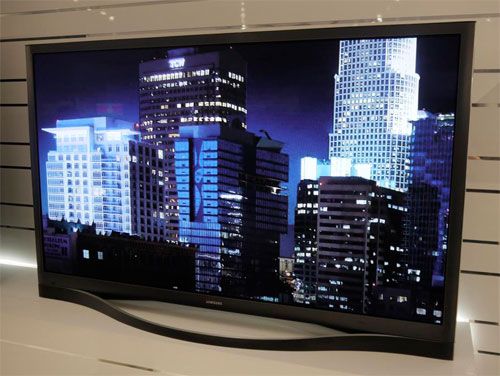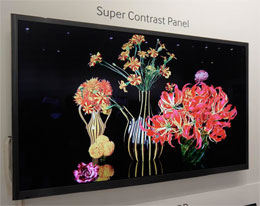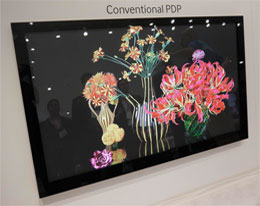Last year, we remarked that plasma display panel (PDP) technology has been declared dead “more times than a stray cat” – that’s in spite of it still being the number one choice for overall picture quality, especially in the eyes of video enthusiasts (our target audience).
 |
| Samsung shows F8500 plasma TV with near-OLED picture quality at CES |
Samsung has been showing the venerable display technology increasing amounts of love lately, but we were still surprised at the company’s claims for the performance of its new F8500 plasma series, which in the UK market comprises the 51-inch PS51F8500 and the 64-inch PS64F8500.
Although it won’t beat the upcoming (and prohibitively expensive) OLED TV technology in terms of overall picture quality, Samsung’s F8500 plasmas might just become the next best thing for most video enthusiasts, and fill the gap for high quality, high contrast flat-screen TVs until OLED displays become affordable. The contrast performance – admittedly running in the show floor “ultra vivid” modes – is stunning. In fact, Samsung mentions that its latest flagship plasma televisions are as bright as an LED LCD, but without the compromises in black level that LCD technology is saddled with.
 |  |
| Samsung’s Super Contrast Panel | Conventional PDP |
In fact, the image quality is close to OLED, featuring the many benefits of plasma display technology, but with dazzling brightness which is out of the ordinary. The “Real Black” technology also worked very effectively on the brightly-lit show floor, rejecting a good amount of ambient light. That bodes very well for its performance in more subdued home environments. Here’s a list of improvements Samsung claims to have implemented on the F8500 PDP:
Needless to say, we look forward to receiving a review sample, and seeing how it compares to Panasonic’s 2013 range of high-end plasma TVs like the ZT60 and VT60. It looks like plasma fans are in for another stellar year.